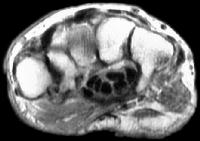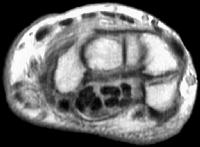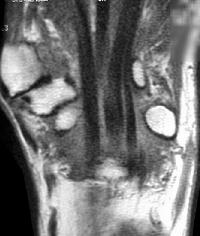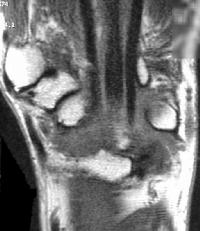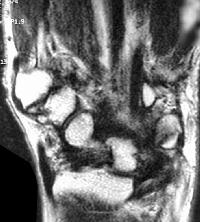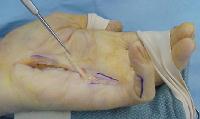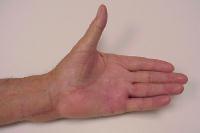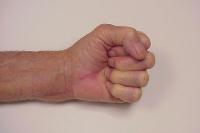| Flexor tendon ruptures are most often
due to either sudden trauma, attrition from chafing against a sharp bone
prominence, or a combination of both. Flexor tendon ruptures within the
carpal tunnel are most often due to attrition from the latter cause, with
two common patterns. Protruding osteophytes of the radius, scaphoid or
trapezium are the culprits for radial tendon ruptures, such as the flexor
pollicis longus. Nonunion of a hook of hamate fracture is a likely etiology
for a small finger flexor tendon rupture in the carpal tunnel. The etiology
is not always clear, as illustrated by this case. |
